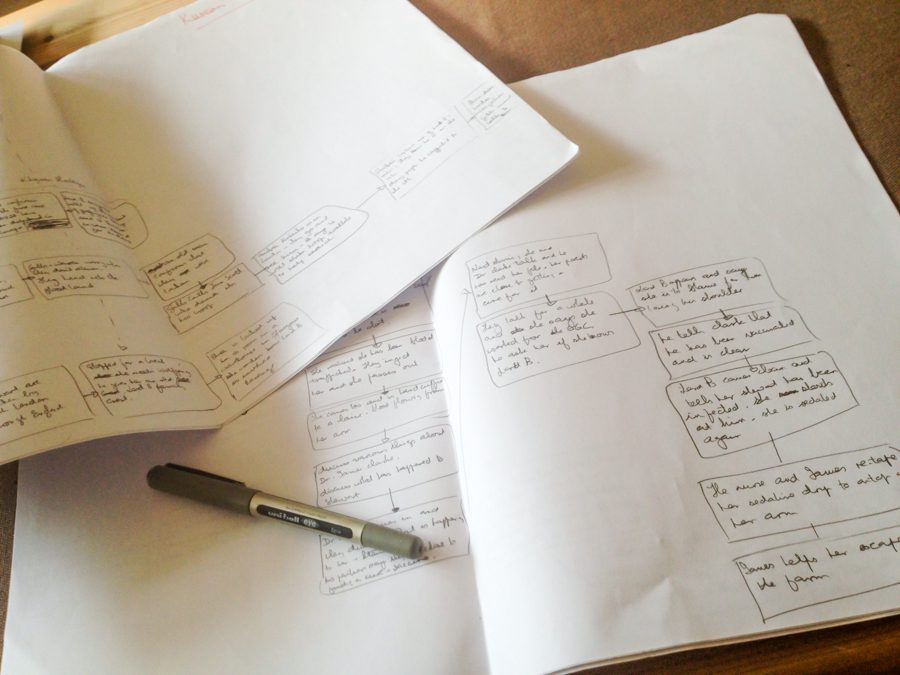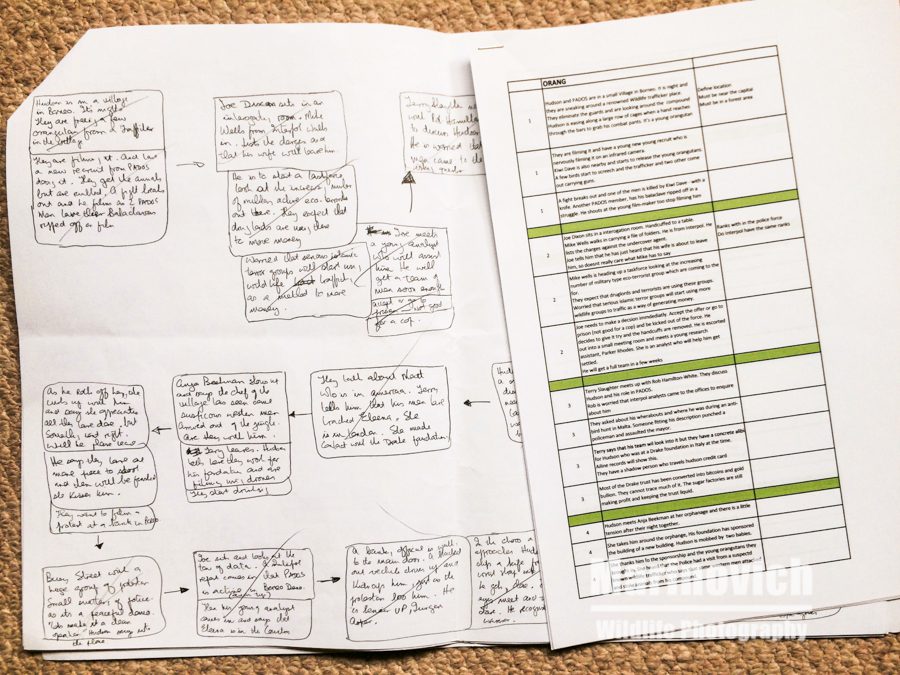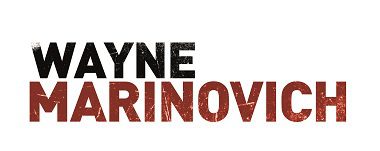Outlines and Plans
Topics
-
- The Rough outline
- The Stepsheet
- The Chapter outline
The Rough Outline
Movies aren’t made by having the cast and crew arrive on set to shoot the first scene without any planning. They start out with a two-dimensional script that is translated into a three-dimensional story. Storyboards are created to help visualise the scenes, camera angles, points of view and other visual nuances.
Writing a novel or novella is no different. You need a rough outline of what you want to write about. This outline is a follow-on from your summary document (a one-pager) and will continue to be developed. You might use mind maps or flow drawings of the book and need to get it down on paper.
I do this on A3 sheets of paper. Typically, I use a pencil to write down the key points in my novel. The outline will be structured according to the three-act principal, and I try to get my ideas in this structure as early as I can.
It’s at this point that I start to think about the sequence of events and draw boxes with descriptions linked by arrows.

The Stepsheet
A stepsheet is a sequence of events that happen from the start of your novel through to the end. These are down to scene level in some cases, and others are simply ideas that have not been fully expanded or researched
I use an excel spreadsheet to list the scenes of the novel, and it allows me to move scenes around to enhance the reading experience. Each scene at this point is typically a sentence or two, nothing more. You’re not trying to write the full scene.
There are by-products to having them in a spreadsheet at this stage. Key research points may be identified and noted down alongside the relevant scene. You may have only written a line for the scene knowing that you need to do some research on a location, disease or weapon that has sparked an idea.
While preparing the stepsheet, I get the first glimpse at all the characters in the book. I work out whether they could be main or secondary characters. Characterisation is not possible without conflict between the characters, so I want to get a handle on who is involved as early as possible. It’s at this point that I start to formulate ideas about key areas of conflict between protagonists and antagonists. I start to look at the point of view (POV) of everyone. I might want to write each scene in, but that that change at any time. Some great changes in POV in my novels have come from suggestions made by my editor when he works his magic. They are just suggestions, and you still have to decide whether rewrite the scene or not.
I print the stepsheet and read through the scenes in a single sitting.

Chapter outline.
Because I write my novels in the third person omniscient, I like to get a handle on the POV as soon as possible. While I think about this in the Stepsheet, I tend to formalise it in the chapter outline.
I do the chapter outline a few weeks before I sit down to write my first draft. That way it keeps everything fresh. A chapter can be a single scene, or it can be a few scenes with a common thread. I might have a protagonist having an argument in the street with a fellow character about having to go and confront the villain. The next scene is the protagonist sitting in the villain’s office.
I link the scenes by the POV, or through whose eyes I want the reader to see the scene unfold.
In the above example, I could write it in two different ways. I could write both scenes through the protagonist’s eyes, or I switch to the Villain for the second as he sits across from the protagonist. The POV could change at any point even after a few drafts or when the editor gets their hands on the manuscript.
Around this time I start to look at the character biographies or CV’s. I’ll handle that in the next post.
Further Reading
Re-read the third page in the Writing Tip series – Part 3 – Pantster or Plotter. What type of writer are you?
Or, move onto the fifth page – Part 5 – Your Characters
Please click on the button below if you want to receive my newsletter with tips, book release updates and FREE sign-up gifts









